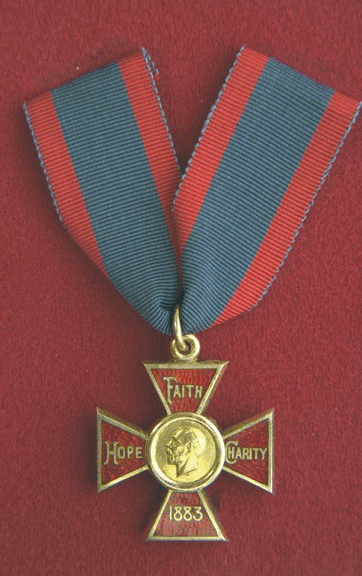Royal Red Cross Class 1 (RRC)
Description
Context
The Royal Red Cross Class 1 (RRC) was instituted on 23 April 1883 and the first award to a Canadian was made in 1902. The Bar was instituted on 15 December 1917.
Eligibility and Criteria
Member (First Class) RRC: The award is given to a fully trained nurse of the Official Nursing Service who has shown exceptional devotion and competency in the performance of actual nursing duties, over a continuous and long period, or who has performed some very exceptional act of bravery and devotion at her post of duty. Up to two percent of the total establishment of nurses could receive the RRC.
Description
A cross, 1.375 inches wide, enameled red, and edged with gold, with a circular medallion at its centre. For mounting, there is a small ring at the top of the cross through which a larger ring passes. The badge may be worn from a bow or if worn with other medals, a third larger ring is added through which the ribbon passes.
On the obverse of the medal, a bareheaded effigy of the reigning monarch is in the centre, with the words FAITH (top), HOPE (left), CHARITY (right), and 1883 (bottom) in gold on the arms of the cross.
On the reverse of the medal the Royal Cypher of the reigning monarch appears in the centre, surmounted by a crown.
The light blue ribbon is one inch wide, with red edge stripes. A rosette is worn on the ribbon in undress to denote a bar to the RRC.
Bars
To recognize further exceptional devotion and competency in the performance of actual nursing duties or some very exceptional act of bravery and devotion at her post of duty, a bar may be awarded to a recipient of the RRC. The bar is linked to the cross and is made of red enamel.
Historical Notes
- Men were allowed into the order on 30 December 1976. No Canadian men have yet become members or associates of the order.
- The badge is issued unnamed.
- There were 132 RRCs and four bars issued to Canadians.
